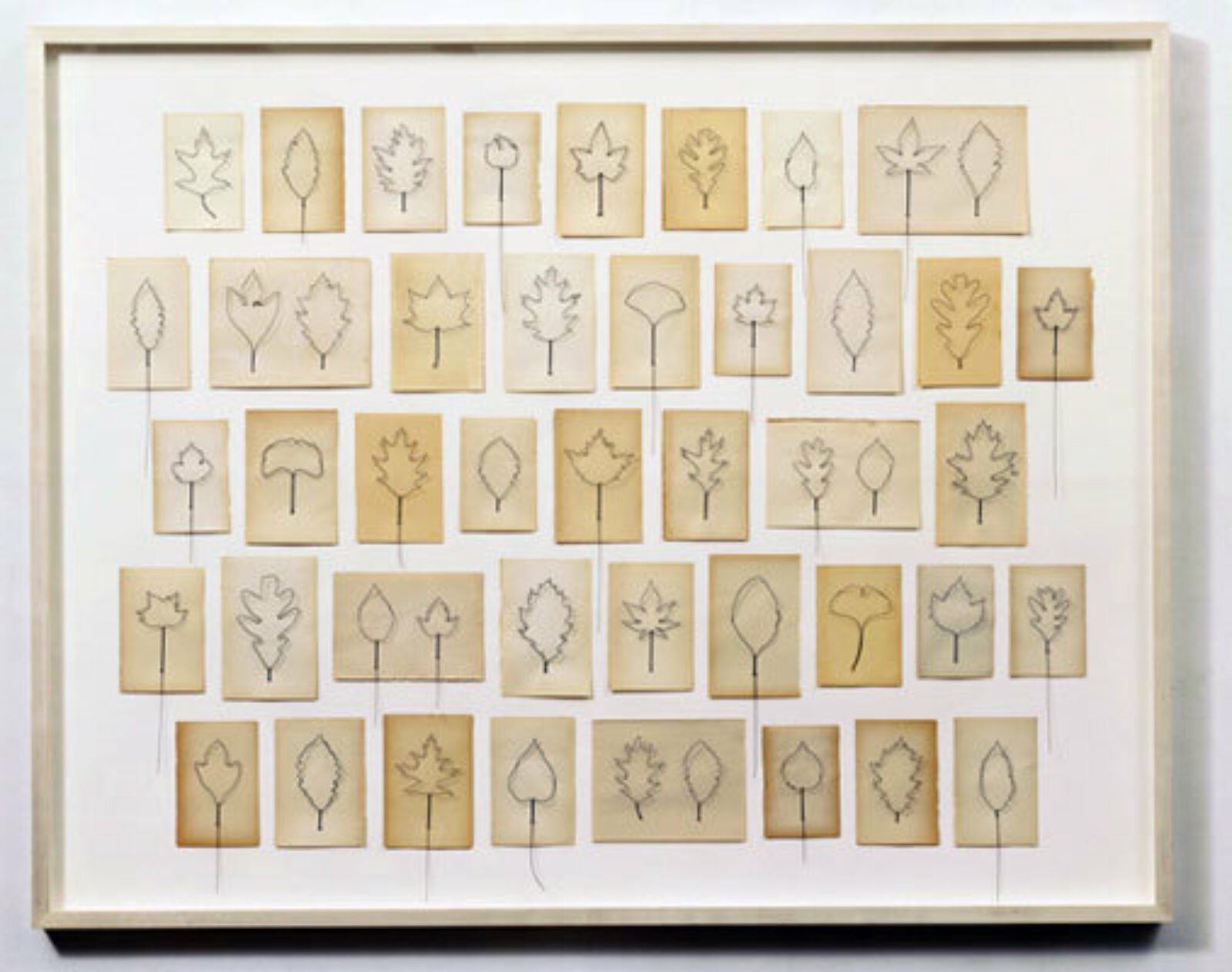

















featured gallery for May 2007
Eclipse
Eclipse
"Light" is rich in formal, literal, and metaphorical meanings. Illumination, revelation, light palette, salvation, entertaining and frivolous, air and sky -- these are just some of its associations.
How, I wondered, is light approached by artists in the Frank Moore Archive Project, who bear the crucible of illness?
In addition to exploring light's traditional associations, they expand upon them in inventive, sometimes profound, ways. The themes presented here are key, but only some of those that can be drawn from this abundant resource.
Eclipse of the Sun
The paintings of Frank Moore himself, though characterized by a darkness of spirit, have a lightness of tone and color. His art often confronts the devastation of illness in the context of light.
Eclipse is a succinct example. It depicts a day at the beach, but the sun -- and all its associations of health, joy, and hope -- is obstructed by a molecular symbol of HIV-invaded DNA. The figures are skeletal, and the sand is strewn with condoms and syringes.
Eclipse has a number of counterparts in the archive, and they are often generalized beyond illness. Luis Carle's The Ethereal in Nature: A Study of Clouds, for example, takes the natural world to metaphor, a dark cloud dramatically blocking the sun. La Corona, by Peter Madero III, shows the sky from behind barbed wire.
Memory
Light is sometimes manipulated to anchor what might be lost, to hold onto what is fragile and fleeting.
Eric Rhein's delicate wire sculptures capture leaves and birds in mere outline. But he makes these minimal indications of form cast shadows by interposing them between light and paper, the shadows rooting them in the physical world as though they were opaque bodies of substance. By making the shadows an integral element of the work, affixing the wire to paper, Rhein seems to halt a bird that would otherwise fly away and a leaf that would drift to the ground.
Rhein's leaves are memorials, each one named for someone who died. Other archive artists, too, use light to invoke memory or to capture the fragility of existence.
In George Towne's Lucio on Tony's Bed, for example, the light flowing onto the white, turned-down sheets conveys not just an overwhelming sense of loss and absence, but the memory of the person who has been lost. In Ferenc Suto's Untitled, the face is like a light-bathed memory, hovering, distant, beyond access.
Hope
During the early 1990s, Stephen Andrews made Facsimile, a series of more than 140 faces of those who died of HIV-related causes. As shown in a detail from this work, Andrews used a process that reads as light to erode the faces' physical presence.
With the advent of protease inhibitors in 1996, his approach changed. As he has explained, "I had no prescription for where one might be headed, but maybe if I could describe where we were at that moment we could move forward from there." No Gold, one work from this moment, is silkscreened on pig intestine -- a rainbow of light on the body hinting at a future that could at least be imagined.
In Andrews' recent imagery of the Iraq war, his depiction of light is emphatic, yet the hope remains ambiguous. He has described these images as "illustrative of some kind of transformative moment that may or may not be redemptive. 'Going into the light' may be a description of the moment of dying that we the living can understand or it may signal a coming out of a time of darkness."
The ambiguity of his statement is evident in the imagery. In Waiting for the Bus, light may be revelatory or redemptive; also perhaps blinding and futile.
Place and Space
The long tradition of using light to denote the qualities of a specific place, or to create and define a special place, is explored and expanded by several artists. Eduardo Mirales' light in Delano Winter Party, for example, conveys the warmth of Florida, and seems to be a personal, almost magical analog of his own affection for it.
Kermit Berg's light creates a separate, emotionally remote place. His photographs depict natural light streaming into what might be termed contemporary urban cathedrals -- the train station, the store, the museum -- places of congregation that Berg shows empty of human presence. Instead, light is the animating presence. It takes on an existence of its own, transforming space into something abstract and almost consecrated.
Felix Gonzalez-Torres used light in Untitled (North) to create a unique space, but he did it with everyday electric light bulbs. Strung together on sinuous cords, they are evocative of genitalia on vines, and hung from ceiling to floor they are like cascading waterfalls. The light utterly transforms the matter-of-fact into an atmospheric light-space.
Night Light
Filtered through the artist's temperament, the night sky, a time when the stars become visible markers of one big vast beyond, can become a personal metaphor for the individual's relation to the universe. The images of the night sky shown here are just two variations on this theme found in the archive. In Thomas Belloff's Lost, the stars extend indefinitely, creating an expanse beyond understanding. In Eric Rhein's Milky Way the stars are as though brought down to Earth, casting shadows.
A counterpoint to these personal night skyscapes are some artist-designed works for indoors: Curtis Carman's light-reflecting disco ball, BlingWorld, part of his exuberant Drag Queen Spaceship, or Freddy Borges' porcelain lamp -- knobby, humorous, seen here with its own artificial plant. These are objects related to social or actual commerce, shiny, glistening, for enjoyment.
Light Palette/Voice
Patrick Webb's paintings touch on many themes already met. Like Frank Moore's, his palette is light, and like the works of other artists, Webb's have the atmosphere of memory. As a narrative painter, though, Webb's concerns are somewhat different. His paintings tell of the adventures of a modern-day Punchinello, the clown who was a stock figure of the Commedia dell'Arte.
How does the light palette affect our perception of Punchinello, a sometimes tragic character? As a narrative device, light seems to be the artist's voice, keeping Punchinello's struggles, inadequacies, and loneliness at a safe distance as he ventures into, and retreats from, the world.
The archive is so rich with imagery of light -- the light-filled installations of Sarawut Chutiwongpeti, the night scenes of Richard Rinaldi, the light falling on objects in Bruce Cratsley's interiors -- it can be culled for more exhibits on this theme, each voice illuminating a way to see, experience, and understand.
